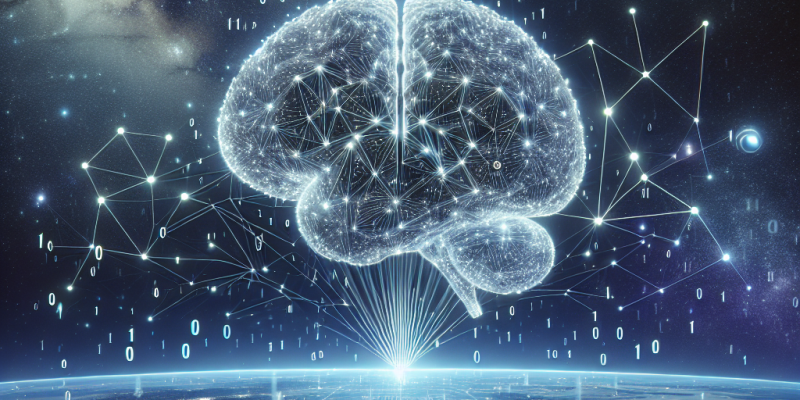Future Directions in NLP: What’s Next for Natural Language Understanding?

Future Directions in NLP: What’s Next for Natural Language Understanding?
The field of Natural Language Processing (NLP) has seen remarkable advancements over the past two decades, pushing the boundaries of how machines understand and generate human language. From early rule-based systems to modern transformer architectures like BERT and GPT, the trajectory of NLP technology illustrates a continual evolution driven by breakthroughs in algorithms, computational power, and abundant data. As we gaze into the future, several promising directions emerge that will shape the next chapter of natural language understanding.
1. Enhancing Contextual Understanding
One of the critical limitations of current NLP models is their ability to process and retain contextual understanding over longer texts or conversations. While transformer models have significantly improved upon this, challenges remain in capturing nuances related to discourse, tone, and situational context. Future research will likely focus on enhancing memory mechanisms within models, allowing them to remember prior interactions or relevant background information. This could lead to more coherent and contextually aware conversational agents capable of engaging in multi-turn dialogues.
2. Cross-Lingual and Multimodal Understanding
As globalization continues to connect cultures and languages, there is an increasing demand for NLP systems that can operate across multiple languages and modalities. Cross-lingual models that can transfer knowledge from high-resource languages to low-resource languages will democratize access to NLP technology worldwide. Furthermore, integrating multimodal data—such as images, audio, and text—into NLP models will create systems that can understand and generate richer content. This evolution will mark a shift towards truly holistic language understanding that reflects the complexity of human communication.
3. Ethical and Bias Mitigation Strategies
Ethical considerations and bias in AI have taken center stage in recent discussions surrounding NLP. As models are trained on large datasets drawn from the internet, they inadvertently learn and propagate societal biases. Addressing these issues requires a multifaceted approach, including developing fairness metrics, creating balanced training datasets, and implementing algorithmic interventions. The future of NLP will demand more transparency, accountability, and inclusivity to ensure that systems are not only effective but also equitable and just.
4. Interpretability and Explainability
As NLP systems become more prevalent in sectors like healthcare, finance, and law, the need for interpretability and explainability increases. Users must understand how decisions are made by AI systems, particularly in high-stakes environments. Research will likely continue to focus on making models more interpretable by developing new techniques that simplify complex models or provide reasoning behind their outputs. This will empower users to trust and validate the decisions made by NLP systems.
5. Continued Evolution of Pre-trained Models
The success of pre-trained language models has transformed how NLP tasks are approached and solved. However, fine-tuning these models can be resource-intensive, requiring substantial computational power and training data. The future may see a surge of research into more efficient training techniques, such as few-shot learning, zero-shot learning, and transfer learning, allowing models to generalize better from limited data. Additionally, efforts towards creating smaller, specialized models that are tailored for specific tasks could make state-of-the-art NLP more accessible to businesses and developers.
6. Integration with Knowledge Graphs and External Databases
For deeper understanding and reasoning capabilities, integrating NLP with structured data sources, such as knowledge graphs or external databases, can enhance model performance. This synergetic approach can lead to smarter applications that not only interpret language but also retrieve relevant information to provide answers based on factual data. For instance, conversational agents equipped with access to real-time databases will be able to provide users with accurate, up-to-date information, thus offering a more interactive and responsive experience.
7. Personalization in NLP
As NLP systems evolve, personalizing interactions based on user preferences, behaviors, and past interactions will become increasingly feasible. By leveraging user data ethically, future NLP systems can tailor responses to fit individual communication styles and needs, enhancing user satisfaction and engagement. Customizable conversational agents that learn from user feedback will pave the way for more meaningful human-computer interactions.
Conclusion
The landscape of Natural Language Processing is rapidly shifting, and the frontier of natural language understanding is richer than ever. As researchers and developers tackle the emerging challenges—enhancing context-awareness, addressing ethical considerations, and improving interpretability—the road ahead promises to be filled with innovations that will redefine how machines communicate with humans. Fostering collaboration across disciplines, ensuring the responsible development of technology, and maintaining a focus on diverse user needs will be crucial as we move toward a future where language understanding systems seamlessly integrate into our daily lives. The next generation of NLP will not only advance technical capabilities but also enrich the human experience of communication itself.














